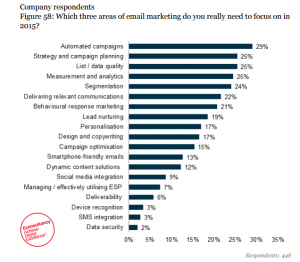Selling a business with a fishing rod is like casting a line, dropping the lure, and waiting. In the real world, this involves confidentially marketing your business for sale using various media: online media, trade publications, newspapers, and others. This is a passive approach, in which you place the advertisement, then sit and wait (visualize your average fisherman patiently waiting).
When fishing, you typically do not know who is going to bite the bait — it could be a 10-pound bass or a 50-pound tuna. You usually have a rough idea based on the body of water (media) you are fishing in, although there are always exceptions.
Selling a business with a rifle, on the other hand, involves knowing exactly who your targets are, hunting them down, confronting them directly, and firing an accurate shot right where you need to. Selling a business with a rifle is an active, involved process (think costlier and more time-consuming) that requires planning, discipline, accuracy and stealth (confidentiality).
While I prefer avoiding generalizations (yes, this is a generalization about generalizations), here is what I’ve observed:
You sell small businesses with a fishing rod, and you sell mid-sized businesses with a rifle.
In some cases, you can use both. Note that you also tend to fish for smaller creatures (e.g., bass, salmon, tuna, crappie, trout), while you hunt for larger creatures (e.g., deer, elk, bison, moose). This is the same in the business world.
‘Fishing’ is for small businesses; ‘hunting’ is for mid-sized businesses
Let me first define a small business and a mid-sized business:
- Small business – Annual revenue: less than $ 5 million; annual cash flow/profit: less than $ 1 million
- Mid-sized business – Annual revenue: $ 5 million to $ 100 million; annual cash flow/profit: $ 1 million to $ 10 million
Who buys small businesses?
In determining a marketing strategy for selling your company, you must first define your target market. Small businesses are predominantly purchased by individuals (about 95% to 99% of the time) and not commonly acquired by companies (about 1% to 5% of the time).
Next, you must figure out the most efficient way to contact these individuals. Do you have to go door to door or randomly stop people in a grocery store to ask if they want to buy a business (hunting)? Or is it more effective to advertise your business for sale in a form of targeted media (this is the body of water, lake or ocean you choose to fish in) that reaches individuals who are actively looking for businesses to buy?
Because the target market for small businesses is primarily individuals, the most efficient and cost-effective method of finding those buyers is through targeted forms of media, in which those individuals have identified themselves as potential buyers. In other words, this group of people has already been corralled for you, thus making the process more efficient, and therefore cost effective.
How about mid-sized companies?
Again, in preparing a marketing strategy to sell any company, you must first determine your target market. Who buys mid-sized or middle market companies? These are typically purchased by three types of buyers:
- Private, wealthy individuals – The most common buyers of businesses priced at $ 1 million to $ 5 million.
- Other companies – They might be your direct (lateral or horizontal) or indirect (vertical or another form) competitors.
- Private equity groups – Also called financial buyers. They can sometimes be strategic if one of the companies in their portfolio holds potential synergies with your company.
Wealthy individual buyers can’t be hunted
Mid-sized businesses priced at around the $ 5-million to $ 10-million mark are commonly purchased by wealthy individuals, so it may make sense to both fish and hunt for them. However, as the price of the business increases — e.g., over $ 10 million — finding wealthy individual buyers becomes more difficult.
Wealthy individuals are also incredibly private people, and they just cannot be “hunted.” Finding them via targeted media is more efficient. If they maintain a presence on targeted media, then they have identified themselves as someone who may be interested. These wealthy individuals are also very rare and usually do not have over $ 10 million in liquid funds to invest in a business. If they do, then they most probably already own another company. In such a case, it makes sense to contact them through the company they own.
Smaller or larger companies: Which should you target?
“Other companies” — the second type of buyers, who are typically your competitors — could be categorized as smaller or larger companies. In buying a business, they normally set minimum criteria: primarily profitability or cash flow. As a general rule, companies tend to acquire other companies with at least $ 1 million annual cash flow.
In choosing other companies to acquire your business, be particularly wary of smaller companies with revenue of less than $ 10 million per year. Unlike what most people believe, smaller companies do not actively acquire other companies. Why? Well, they are too busy putting out fires and chasing a new big customer to be proactive enough to create a team focused on developing an acquisition strategy.
A very important concept you need to remember when selling your company using the “rifle” method is to approach only those targets that are ready, willing and able to take action. You will know this by researching the company and determining how many acquisitions it has made in the past one to five years. The more acquisitions (companies it has purchased) it has recently made, the more likely that it will buy another company.
An overwhelming majority of smaller companies are not ready, willing and able to spend hundreds of thousands or millions of dollars to purchase a competitor. Of course, there are exceptions, but in general, only mid-sized and larger companies grow through acquisitions.
Smaller companies typically grow organically — by slowly increasing their marketing and advertising budgets. Most of them are in a state of disorganized chaos, are busy chasing the next big deal (a new big customer) and do not have large cash reserves to pursue acquisitions as a growth strategy. Attempting to sell your business to smaller companies is, therefore, an ineffective strategy that can waste an enormous amount of time.
On larger companies making business deals: ‘Size does not matter’
Again, the primary criterion larger companies use to determine if an acquisition makes sense is annual profitability, cash flow or EBITDA. These companies are looking for a minimum annual cash flow/EBITDA/profitability of $ 1 million to $ 10+ million.
Why? The answer is simple — it takes just as much time to do a $ 1-million deal as it does to do a $ 25-million deal. Also, the professional fees involved in the acquisitions are similar as a fixed (just slightly higher for larger deals), regardless of the size of the deal. The fees, therefore, decrease, as a percentage of the total deal size, as the deal size increases.
For example, a $ 1-million deal may command fees and expenses of $ 100,000 or more (10% of the deal size), while a $ 25-million transaction may command fees of $ 150,000 to $ 300,000 (0.6% to 1.2%). This means that the percentage of fees and expenses decreases as the size of the deal increases. Doing larger deals is, therefore, more cost-effective.
A company will have to invest in 25 businesses — each having a cash flow of at least $ 1 million per year — to have the same impact as buying a single company with an annual cash flow of $ 25 million. So buying larger companies is definitely much more efficient, both from a cost and time perspective.
Is your business an exception to the ‘EBITDA’ rule?
In any deal, there are exceptions. In this case, exceptions exist when a company can be sold way above its valuation. The only two exceptions, however, that can influence the acquiring company’s criteria are:
- Intellectual property – the patents, trademarks or trade secrets that your company has.
- Any form of synergy that can bring a tremendous amount of value and that cannot be easily replicated by the acquiring company.
Based on my years of experience helping business owners sell their companies, less than 5% of companies for sale have either of these two components, so most acquiring companies resort to the “minimum EBITDA” criteria in buying a business.
Let me illustrate an exception:
- Norm – Your company is worth about $ 5 million to $ 7 million. You would like to sell it for top dollar, which is $ 7 million.
- Exception – Your company is worth about $ 5 million to $ 7 million. You would like to sell it for $ 15 million to $ 20 million.
Determining whether your business is an “exception” requires you to use (based on our pattern recognition skills) your professional judgment. Any experienced professional, however, will not work on exceptions. Most professionals do what they know will work and what has worked in the past. Working based on exceptions only shows a professional’s lack of experience in the industry. Why? Any good professional who has been practicing his or her craft for over 10 years has likely gained a lot of work from referrals. Much of this work is probably not based on exceptions.
If your company is an exception (Read: You meet one of the two exception criteria above), then these rules — minimum criteria in buying a business — do not apply. Otherwise, the value of your business will only be as good as your EBIT or EBITDA.
How do you hunt for private equity groups?
Just like the first two types of buyers, private equity groups (PEGs) do set minimum requirements. As the PEGs’ portfolios become larger, they are forced to do larger deals. Most PEGs set a minimum requirement for revenues of the companies they are acquiring. Many, however, would like to acquire companies with at least $ 1 million to $ 5 million EBITDA per year.
PEGs rarely purchase companies because of a synergy. And note that the exceptions listed above for companies do not apply. PEGs are financial buyers who are after your financial performance and not any synergistic capabilities. The business must usually make sense on a standalone basis for financial buyers. The one minor exception is when a PEG owns a portfolio company that may have some synergy with your company.
Whether the right strategy for selling your business is fishing or hunting, or a combination of both, you must first determine your target market. Is an individual more likely to purchase your business? Or is your target market another business, or perhaps a private equity group? Using the information provided here will help you make this determination. And once you’ve identified the type of buyer that is most likely to acquire your business, you can conduct your marketing strategy accordingly.
So, will you be fishing or hunting for an acquirer?
Business & Finance Articles on Business 2 Community(95)






